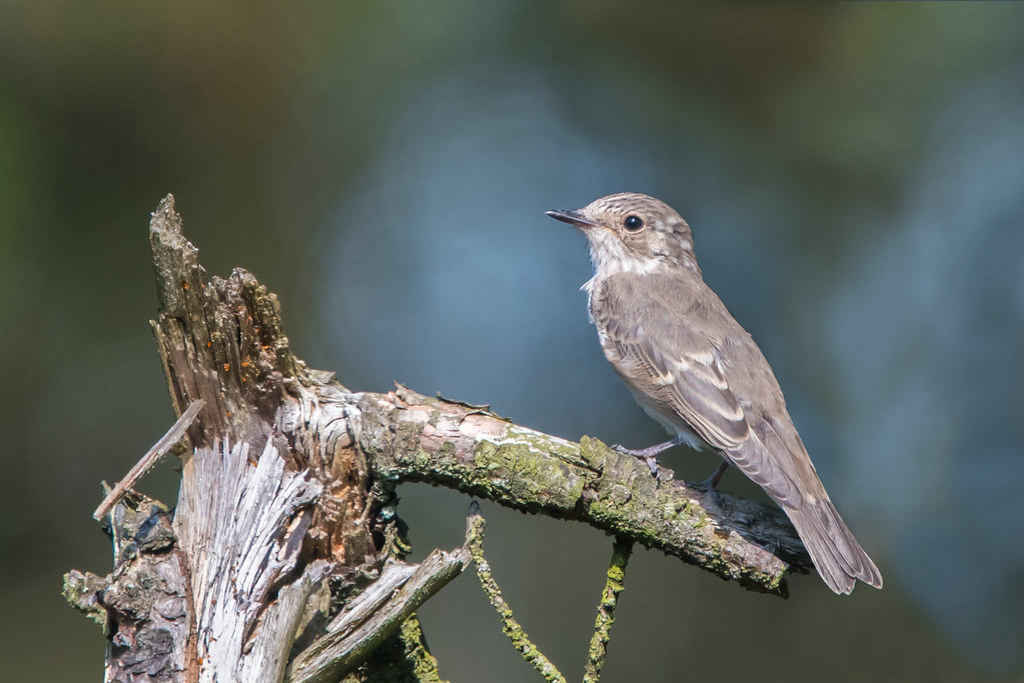
Tim writes: have you ever thought what a daft name Spotted Flycatcher is? Even its scientific name Muscicapa striata means striped flycatcher. Well at least this one lives up to its name and has a few pale spots at the back of its head, which they don’t have for long. This is a recently fledged Spotted Flycatcher that is undergoing its post-juvenile moult, but hasn’t quite completed it, hence the pale spots on its head.
The name Spotted Flycatcher was coined by Thomas Pennant in 1776 who also came up with lots of good names, such as “Warbler” for the birds we now know as such. To be fair to Pennant he came up with the name Flycatcher for this bird eight years earlier, but had to come up with a prefix when he described our other breeding species as Pied Flycatcher. Before Pennant, Pied Flycatcher was known in Britain as “Cold Finch”.
When I first moved to Yorkshire nearly thirty years ago Spotted Flycatchers were so common that I hardly noticed them. Their two-note squeaky wheelbarrow song was a familiar sound of summer, but not any more. Between 1967 and 2010 the population in Britain declined by a massive 89%. They are still quite widely distributed throughout Britain but the numbers have crashed. For every ten pairs there were in my childhood, there is now just one.
Sub-Saharan summer migrants have all suffered population declines in Britain, right across the board. This in itself is unusual as even the beleaguered farmland birds have had a few winners (eg Woodpigeon). It would be easy to point the finger at things going on in their African wintering grounds but the populations of migrants (eg Wood Warbler) are still very strong in Eastern Europe, and these also winter in Africa. In Britain there has been a big drop in insects, with BC’s butterfly counts shining a spotlight on one group. But cleaning insects off the car after a summer drive was the norm when I started driving (in the 1970s). The car used to be caked in insects but there have never been anything like that number in recent decades.
[registration_form]
My favourite passerine.
May 1970, not quite thirteen, coming down hilltop lane on my bike, a bird flew from a low branch of an Ash, snapped at an insect and alighted again.
I knew, from the description in my Readers Digest AA book of British Birds (received the previous Christmas) what i was looking at. Getting off my bike i searched a small patch of Ivy
growing on the deer park wall, and there it was. The first of many over the years (the vicarage wall once had two, it was a long wall).
The last few years my most regular sightings, strangely enough, have been in woods close to Goshawk nests, as i stand watching the nest a flycatcher has often betrayed itself.
There has been some thought that birds such as Firecrest associate themselves with Goshawks
to gain protection from smaller Raptors, in the case of the Spotted Fly i rather suspect that the
bird has fallen back to its ancestral habitat, and is in the last chance saloon.
This year i have failed to see a Spotted Flycatcher for the first time since that day in 1970, and it is quite upsetting me writing about it.